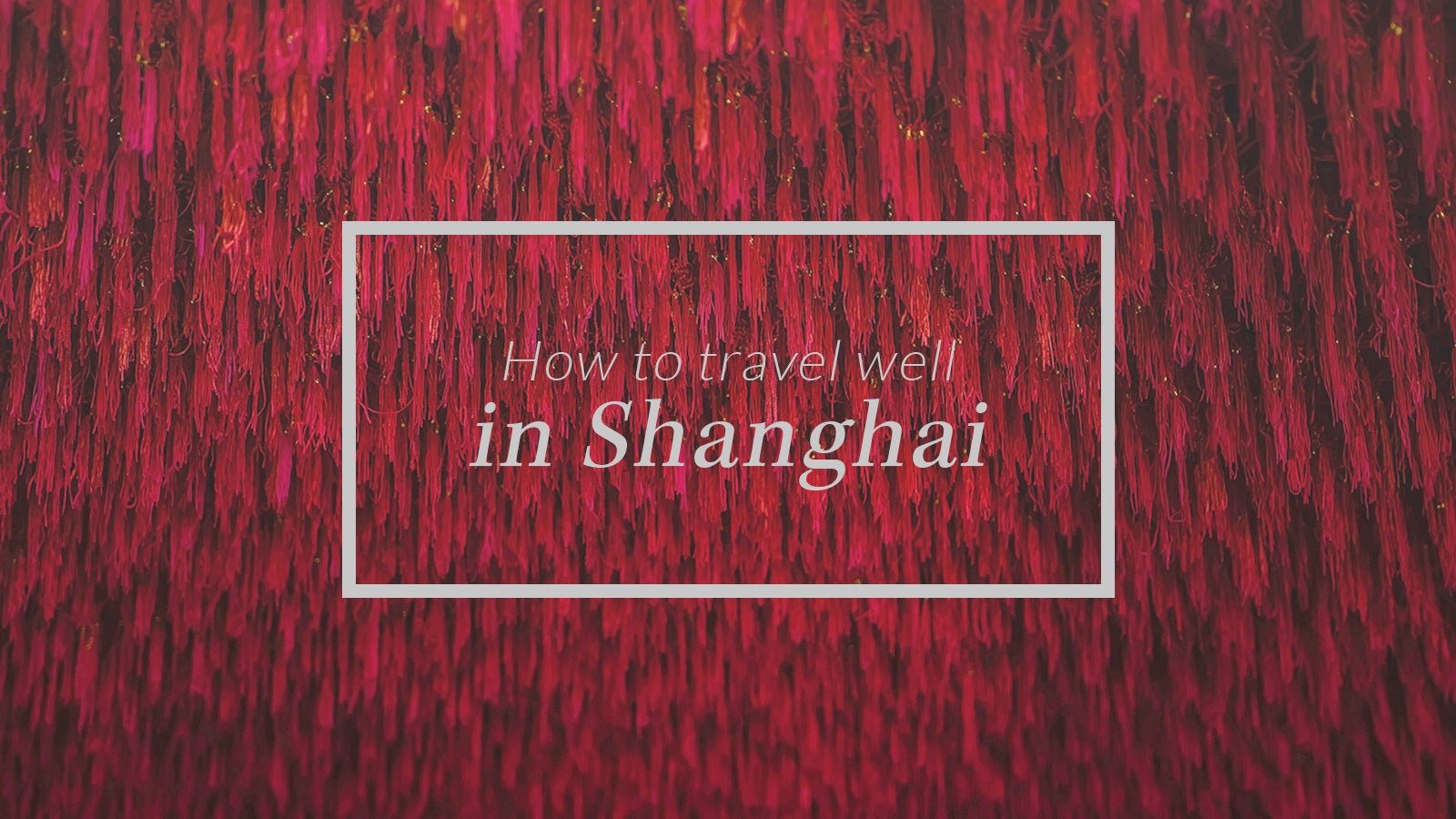12 essential things to see in Shanghai
Shanghai has an alluring reputation as the Paris of the East, but the nickname is a bit of misnomer: after the Opium War in 1842, the British, the French, and the Americans divvied up the city—then a fishing village—each colonizing their own district. In the 1940s, Japan occupied most of Shanghai. Then came the Cultural Revolution and a decline of foreign population that didn’t ease until the 1990s. The government opened back up to foreign investment and it came, in droves.


Shanghai has an alluring reputation as the Paris of the East, but the nickname is a bit of misnomer: after the Opium War in 1842, the British, the French, and the Americans divvied up the city—then a fishing village—each colonizing their own district. In the 1940s, Japan occupied most of Shanghai. Then came the Cultural Revolution and a decline of foreign population that didn’t ease until the 1990s. The government opened back up to foreign investment and it came, in droves.
Today, Shanghai is the most opulent city in China. Luxury brands have flocked to it in recent years, revitalizing a glamour that lay dormant for decades. Consider all that—its turbulent history and its current place on the world stage—and it’s hard to call it the Paris of the East. It’s a cocktail of cultures, and its own ambitious metropolis. Here’s how to relish Shanghai’s past, and its ever-changing present.
Art Deco and Shanghai’s jazz era
During the 1920s and 1930s, the city grew rich, and a cosmopolitan demi-monde formed. Jazz, racetracks, and all manner of nocturnal vices attracted revelers from all over. Those days are gone, but the Art Deco architecture of the era remains. The most impressive gem might be the 1933 Shanghai (10 Shajing Road). Built to be a slaughterhouse, the four-story concrete building looks like an Escher drawing come to life. (Today, it’s a creative events center.) Visit the Rockbund Art Museum (20 Huqiu Road Huangpu District), both to admire its exterior—the building was once home to the Royal Asiatic Society; its been refurbished by architect David Chipperfield—and its contemporary art exhibits. The stepped Metropole Hotel (180 Jiangxi Middle Road), built in the image of Parisian Art Deco styling and American skyscrapers like the Chrysler Building, was built in 1931 and required the invention of a new, lighter kind of concrete so the 14 floors wouldn’t sink into Shanghai’s marshy soil. The Peace Hotel (20 Nanjing East Road)—where Charlie Chaplin once partied—just reopened after a three-year renovation. Have a martini in the Jazz Bar, but limit yourself to one (or two): the magnificent Waldorf Hotel (2 Zhongshan Dong Yi Lu, near Guangdong Lu, Huangpu district, it was formerly a gentlemen’s club) is nearby, has a legendary long bar (34 meters), and still serves its signature Waldorf cocktail–an old-world concoction of whisky, absinthe, and vermouth.

Common preservation
Traces of the Cultural Revolution aren’t obviously visible in Shanghai today, where soaring skyscrapers symbolize the city’s capitalist success, but a few locales have carefully preserved relics from that era. Mao Zedong’s former residence (No.63 Anyi Road, Jing’an District) recently reopened as a museum, where visitors can see where the then-26-year-old leader first read Carl Marx. Ironically, the house now sits at the center of a massive shopping center. For dinner, go to the Shigeru Ban-designed restaurant that’s inspired by the nearby residence. Like the actual residence, Calypso (Jing An Kerry Centre Piazza, No.1218 Yan’an Middle Road) is a modest, one-story structure that’s an oasis from the glass and steel skyline around it.

Shanghai today
Shanghai today is a haven for shopping, but some of the best can be found away from the expected European outposts: head to the Yu Yuan Gardens and Bazaar (218 Anren St, Huangpu) marketplace, and to Nanjing East Road to pick up local goods and souvenirs. For a bit of Paris-in-Shanghai, head to the tree-lined avenues in the French Concession area. The neighborhood was the province of the French from 1849 to 1946, and their elegance stuck. Head down Yandang Road for café’s and shops, towards Fuxing Park, designed in the image of Paris’s famous parks.
Shanghai is the closest metropolis to the main pearl fishing industries, so more discerning shoppers should go to Shanghai Pearl City (3721 Hongmei Lu), an emporium of pearl vendors. Last, give your pocketbook a break and stroll through the winding streets, gardens, and temples of the Huangpu District, known as the Old City of Shanghai. Take it all in—new developments threaten the old neighborhood, and some gardens and buildings have already been demolished.
Immersion in the complex and coalescing culture of Shanghai is one memorable experience important to a life well travelled. Discover how Cathay Pacific enables a Life Well Travelled, and explore passengers’ Life Well Travelled experiences, here.
Read our companion guide of
essential experiences in Singapore
.
This article was produced on behalf of Cathay Pacific by the Quartz marketing team and not by the Quartz editorial staff.